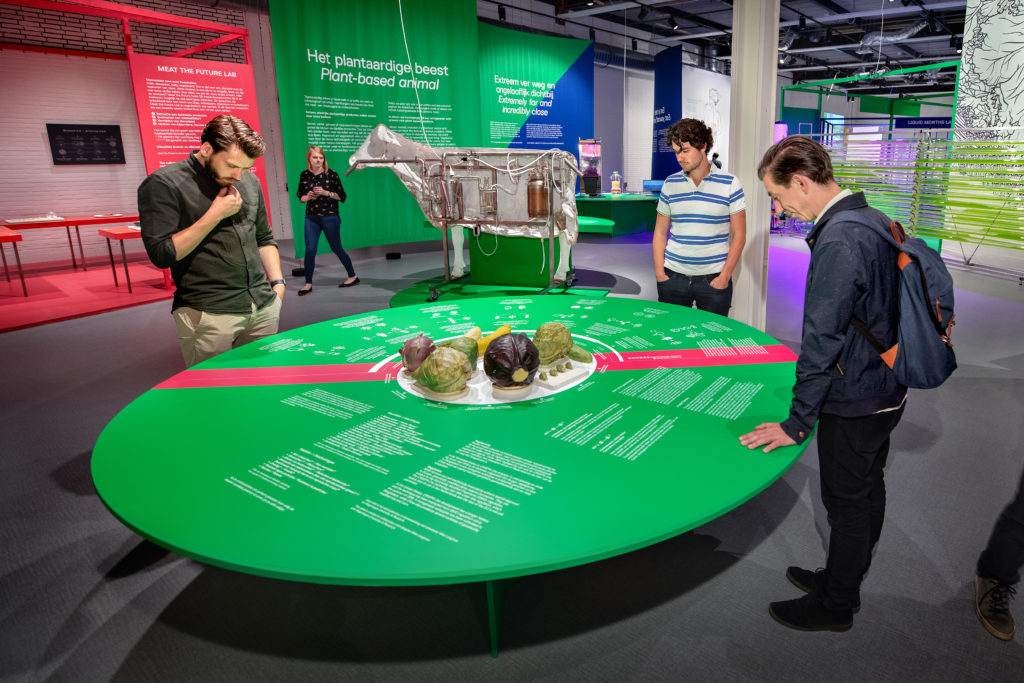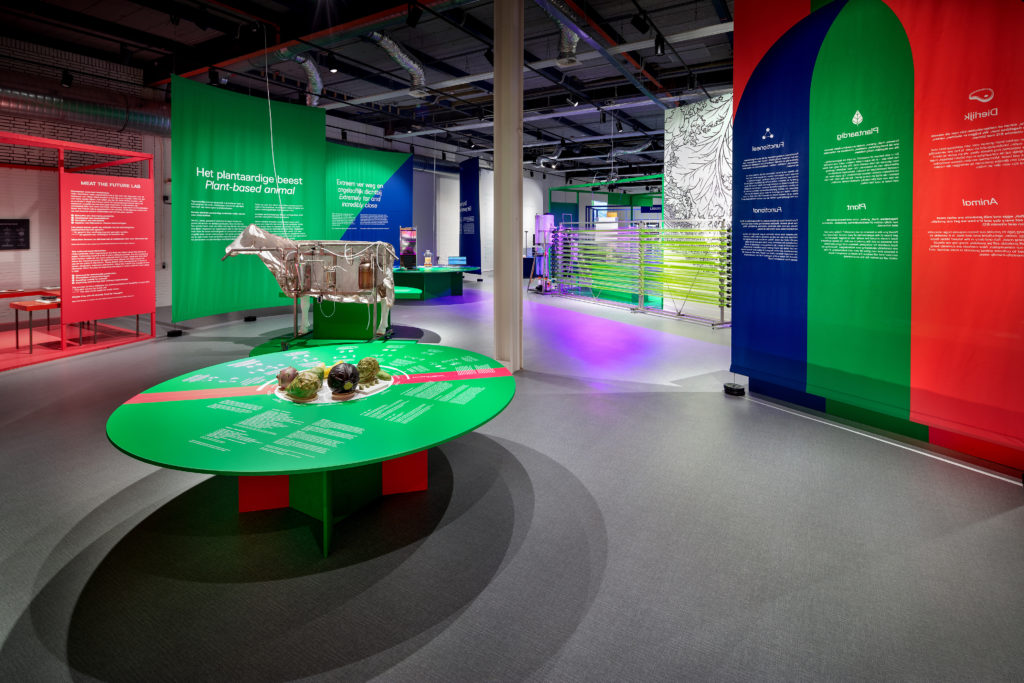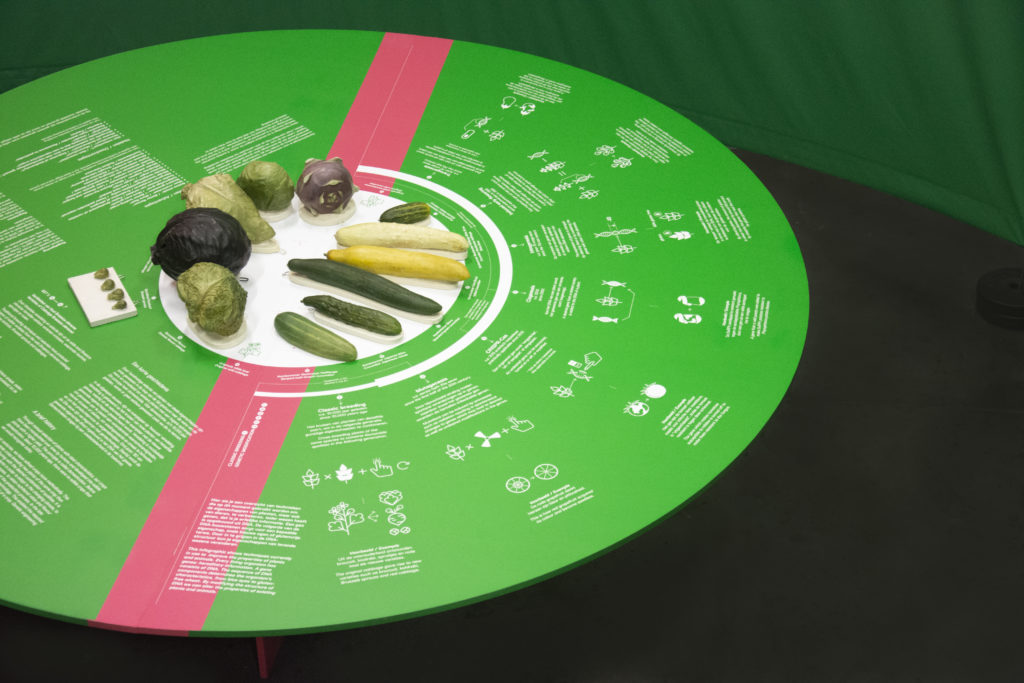Future Food Exhibition
With a growing world population, it will keep growing to about 10 billion in 2050, we must carefully consider how to grow (more) food in the future. The Future Food exhibition gives an insight into future meals based on plantbased, animal based and functional food scenarios. For the exhibition I developed the plant/animal scenario, based on biotechnology to ensure food security in the future.
From Cabbage to Super-cabbage
Everything we eat has changed over the past few centuries. Since the Stone Age, we have been selecting seeds and raising animals with the qualities which match our needs. Over the past years we have cross-bred plants and animals which possesses the best properties. Taste and productivity have improved enormously.
Refining plant and animal species was once a slow, intensive process. Today, however, we have the ability to accelerate that process. Genetic engineers can identify genes that convey specific characteristics in the DNA of a plant or animal. These can be copied and inserted into other species. How does that work? And how do we as a society ensure that DNA technology produces good, safe food?
The table consists of an infographic that shows techniques currently in use to improve the properties of plants and animals. A brief history in the world of plant breeding, a list of pros and cons of gene technology, the regulation of GMO’s in Europe and the rest of the world. And two sets of plaster models, one shows seven edible varieties of the wild cabbage Brassica oleracea. The other shows seven varieties within the cucumbers.
credits
Future Food is a collaboration between NEMO Science Museum and Next Nature Network
Curation: Tanja Koning and Chloé Rutzerveld,
Graphic design: Sjoerd Koopmans / Who is rich dust ?
Plaster models on loan from museum Sow to Grow in Enkhuizen.



